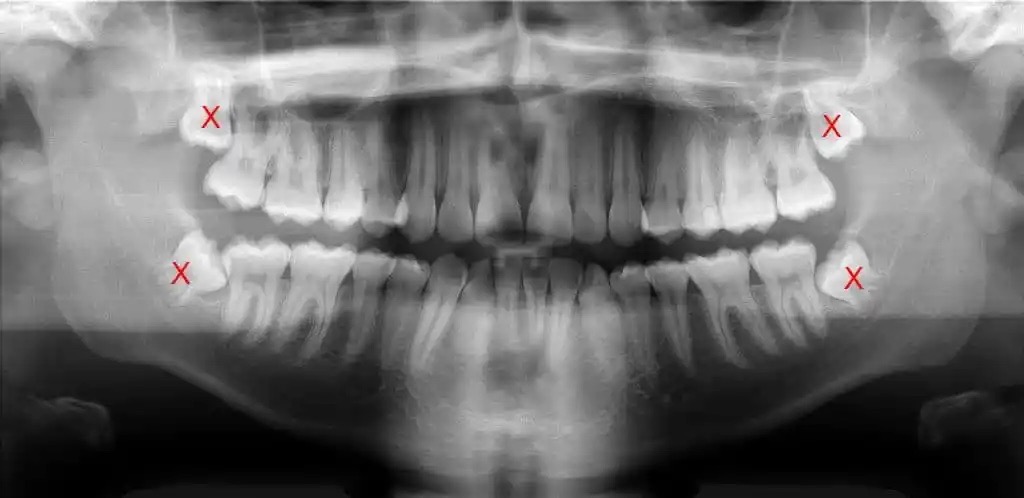Removal Of Impacted Wisdom Teeth
When a tooth is unable to fully enter the mouth, it is said to be “impacted”. Wisdom teeth, also known as third molars, are the last teeth to develop in the mouth, and are the most commonly impacted teeth. Studies have shown that removing impacted wisdom teeth earlier in life results in fewer complications and easier healing.
Symptoms of Impacted Wisdom Teeth
Wisdom teeth typically erupt between 16-20 years of age. While some may erupt properly through the gum or bone, many people have insufficient space for them to come completely through. In these cases, a flap of gum tissue known as an operculum covers the tooth, making it difficult to clean properly. If food or bacteria collects in these areas, a chronic inflammatory reaction can occur, and sometimes infection as well. Many people will develop swelling of the gum flap, known as pericoronitis, which can be very painful, and make it difficult to chew.

Many lower wisdom teeth lie at the wrong angle, and point into the back of the adjacent tooth. This increases the risk of damage to both teeth in the form of cavities, and also the formation of deep gum pockets that cannot be cleaned. Upper wisdom teeth can sometimes erupt through the gum tissue, but be pointed toward the cheek (sideways, instead of down). These can sometimes be the most difficult teeth to clean given how high and how far back they are in the jaw. In rare cases, cysts or tumours may form around impacted wisdom teeth. These potentially destructive pathologic lesions can cause damage to adjacent teeth, bone, and other anatomic structures. Pathologic fracture of the jaw is a risk when these lesions enlarge and eat away at the supporting bone. If any of these lesions are seen on an x-ray, their removal becomes urgent.
Braces and Wisdom Teeth
In some cases, wisdom teeth are removed to facilitate braces, or orthodontics. If there is insufficient space in the jaw, your orthodontist may suggest removing the wisdom teeth to decrease pressure, and to lessen the risk of crowding or shifting of adjacent teeth. Some people require removal of their wisdom teeth before starting orthodontic treatment, others need them removed during treatment, while some can wait until braces are finished. Each situation is different, and depends on factors such as the patient's age, room available in the jaw, whether any additional teeth need to be removed, and whether the wisdom teeth are causing other problems.
What To Do After Wisdom Teeth Are Removed
After your wisdom teeth have been removed, you may have question once you have left the office. If you are unsure of how to care for yourself or loved one, please contact us or check out our guide on how to care for removed wisdom teeth.